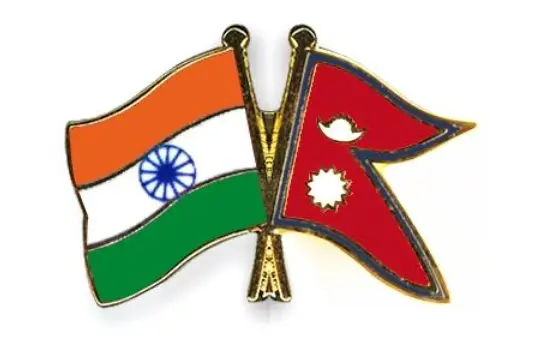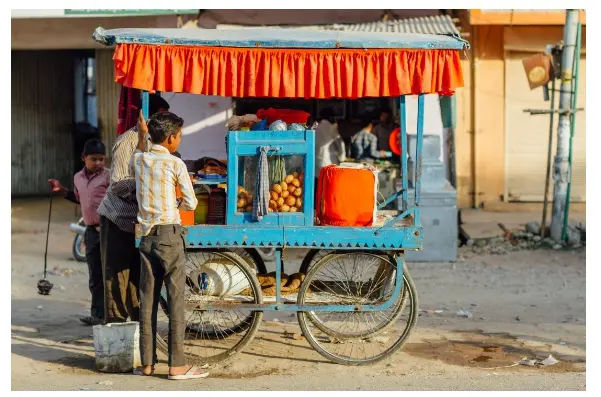Wednesday, 8th May 2024
Rise in Tobacco Prices
In News: Tobacco farmers in Andhra Pradesh are poised to gain as a result of reduced crop yields in Brazil, Zimbabwe, and Indonesia caused by droughts and erratic rainfall patterns.
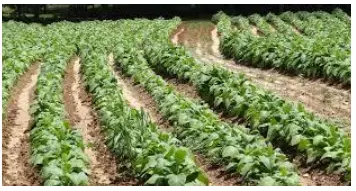
Benefits to Tobacco Farmers in Andhra Pradesh
- Surge in Auction Prices: Tobacco farmers in Andhra Pradesh are experiencing a significant surge in auction prices, with rates reaching near-record levels. This increase marks a 30% rise from initial expectations, providing substantial financial gains to farmers.
- Impact of Global Crop Yields: Trade analysts attribute the rise in tobacco prices to crop damage in Brazil and Zimbabwe. Additionally, drought conditions in Indonesia, another tobacco-producing country, have led to crop failures, further contributing to the price escalation.
- Export Limitations by China: China, a significant tobacco producer, has imposed limitations on tobacco exports to safeguard its domestic cigarette industry amidst reports of global stock shortages. This restriction has fueled price increases in tobacco-producing nations, including India.
- Expected Long-term Benefits: Tobacco exporters and the Indian Tobacco Board anticipate that the disparity between demand and production will sustain price escalations for another year. This situation is likely to benefit Indian growers by providing them with continued favorable pricing conditions.
Key Facts About Tobacco Production in India
- Agro-Climatic Facts: Tobacco cultivation in India thrives under tropical, subtropical, and temperate climates, requiring specific conditions such as a frost-free period of 100 to 120 days, average temperature of 80°F, and well-distributed rainfall. Various tobacco types have specific soil and climatic preferences for optimal growth.
- Economic Significance: Tobacco ranks among the most economically significant crops globally. India's tobacco cultivation covers approximately 0.27% of the net cultivated area, contributing significantly to the country’s agri-exports and excise revenue. India is among the top tobacco-producing nations alongside China and Brazil.
- Diversity in Production: India produces various types of tobacco across 15 states, including Flue-cured Virginia (FCV), Bidi, Hookah, Cigar-wrapper, Cheroot, Burley, Oriental, and others. Gujarat, Andhra Pradesh, and Karnataka are the top three states in both area and production of tobacco.
- Employment and Livelihood: Tobacco cultivation provides livelihood security to around 36 million people in India, including farmers, farm laborers, and workers in processing, manufacturing, and exports. Bidi rolling alone employs around 4.4 million people, contributing significantly to employment generation.
- Export Market and Competition: India exports tobacco and tobacco products to various countries, with major importers including the UK, Germany, Belgium, South Korea, and South Africa. Despite being a major producer, India exports only 30% of its tobacco production, facing competition from countries like Brazil, Zimbabwe, Turkey, China, and Indonesia.
- Competitive Advantage: Indian tobacco exhibits lower levels of contaminants compared to other tobacco-producing countries. India's varied agro-climatic conditions allow for the production of different styles of tobacco, meeting diverse customer preferences globally. Additionally, India enjoys a competitive edge in terms of low production costs and export prices, making its tobacco products considered 'value for money.'
Initiatives Related to Tobacco
Global Initiatives
- WHO Framework Convention on Tobacco Control (WHO FCTC): Adopted in 2003, this treaty has been ratified by 182 countries, including India. It aims to address the tobacco epidemic through various measures.
- MPOWER Measures: Aligned with the WHO FCTC, the MPOWER measures have been effective in saving lives and reducing healthcare costs. These measures focus on policy implementation and surveillance to control tobacco use.
- Global Tobacco Surveillance System (GTSS): This system aims to strengthen countries' ability to implement tobacco control measures and monitor the WHO FCTC and MPOWER technical package through data collection via four surveys.
Initiatives in India
- National Tobacco Control Programme (NTCP): Implemented to control tobacco consumption and its adverse effects on health in India.
- Cigarettes and Other Tobacco Products Act (COTPA), 2003: This legislation regulates tobacco products by restricting advertisement, promotion, and sponsorship; prohibiting smoking in public places; and enforcing health warnings on tobacco product packs.
- Prohibition of Electronic Cigarettes Ordinance, 2019: This ordinance prohibits the production, sale, storage, and distribution of electronic cigarettes in India to safeguard public health.
Source: BS
Climate Migration
In News: In recent times, climate migration has become a prominent concern, but there remains a notable absence of a comprehensive legal structure to safeguard individuals compelled to leave their residences because of progressively intense weather-related catastrophes.
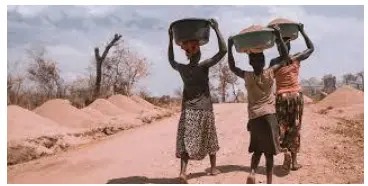
Understanding Climate Refugees
Definition and Scope
- According to the International Organization for Migration (IOM), "climate migration" refers to the movement of individuals or groups primarily compelled to leave their homes due to environmental changes induced by climate change.
- This movement can be temporary or permanent and may occur within a country's borders or across international boundaries.
Causes of Climate Migration
- Sudden-Onset Disasters and Displacement
- Internally displaced people often flee to safer areas within their countries following sudden-onset disasters like floods, hurricanes, and earthquakes, yet returning home becomes challenging due to infrastructure destruction and loss of livelihoods.
- Disasters and Vulnerability
- Vulnerable populations, lacking resources and residing in high-risk areas, are disproportionately affected by disasters, leading to displacement and difficulties in recovery.
- Slow-Onset Disasters and Migration
- Slow-onset disasters such as droughts and desertification degrade land and water resources, making it hard for people to sustain livelihoods and prompting migration in search of better opportunities.
- Sea Level Rise and Coastal Communities
- Rising sea levels pose a threat to coastal communities, resulting in permanent displacement as homes and farmland become submerged.
Challenges Faced by Climate Migrants
- Precarious Livelihoods
- Climate migrants often experience loss of skills and assets, hindering their ability to find new jobs and rebuild livelihoods. They may also end up in informal work sectors with low wages and poor conditions.
- Integration and Social Challenges
- Access to basic services like healthcare, education, and housing can be limited for climate migrants, leading to social exclusion. Cultural and linguistic barriers further complicate their integration into new communities.
- Legal Status and Protection
- Climate migrants face challenges as there's no clear legal framework to protect them, and they do not qualify for refugee status under current international law. Displacement can also increase the risk of statelessness.
- Psychological and Health Impacts
- Displacement and loss due to climate change can cause psychological distress and trauma among migrants, often with limited access to mental health services. They may also be exposed to new health risks in their new locations.
Limitations of Policies
- Global Compact for Migration
- While acknowledging climate change as a factor for human mobility, the Global Compact for Migration does not explicitly address climate refugees, reflecting challenges in reaching consensus on this issue at the international level.
- Identification of Climate Refugees
- Identifying and categorizing individuals or communities affected by climate change as refugees is a key challenge due to the complex nature of climate-induced displacement.
Steps Taken to Address Climate Migration
- Investment in Infrastructure
- Countries like Bangladesh are investing in coastal embankments and flood-resistant infrastructure to protect communities from rising sea levels and storm surges.
- Planned Relocation and Resettlement
- Island nations like Kiribati are exploring planned relocation options for their populations at risk due to rising sea levels, involving careful considerations of land acquisition, cultural preservation, and livelihood opportunities.
- Disaster Preparedness
- Implementation of early warning systems for floods and cyclones in countries like India and Vietnam allows for timely evacuation of vulnerable areas and minimizes casualties and displacement.
- Regional Cooperation
- Regional frameworks like the Kampala Declaration on Protracted Displacement provide models for regional cooperation in addressing climate migration challenges.
Way Forward
- Mitigation Strategies
- Aggressive mitigation strategies to reduce greenhouse gas emissions are crucial in slowing climate change impacts.
- Legal Frameworks and Protection
- Developing legal frameworks to protect climate migrants, such as extending refugee status or creating new protection categories, is essential.
- Investment in Sustainable Development
- Investing in sustainable development and climate-smart agriculture can create opportunities for adaptation and reduce the need for migration.
- Labour Migration Schemes
- Encouraging labour migration among countries as an adaptation measure can mitigate the impacts of climate change on vulnerable communities.
|
UPSC Previous Year Questions Mains (2021) Q. Refugees should not be turned back to the country where they would face persecution or human right violation”. Examine the statement with reference to ethical dimension being violated by the nation claiming to be democratic with open society. Mains (2016) Q. Rehabilitation of human settlements is one of the important environmental impacts which always attracts controversy while planning major projects. Discuss the measures suggested for mitigation of this impact while proposing major developmental projects. |
Source: DTE
Rat-Hole Mining
In News: The National Green Tribunal (NGT) has granted authorities a period of four weeks to provide a response in a case concerning the death of six workers in a fire at a rat-hole coal mine in Nagaland's Wokha district.

Understanding Rat-Hole Mining
- Overview
- Rat-hole mining, named for its resemblance to rodent burrows, is an illegal and perilous method of coal extraction found mainly in Meghalaya, India.
- This technique involves digging narrow, horizontal tunnels underground, often extending tens of meters.
- Types of Rat-Hole Mining
- Side-Cutting Procedure
- In this method, narrow tunnels are dug into hill slopes to locate thin coal seams.
- Box-Cutting
- A rectangular opening is made, followed by vertical pit digging, and then horizontal rat-hole-sized tunnels are created for coal extraction.
- Geographical Spread
- While primarily practiced in Meghalaya, rat-hole mining has been reported in other northeastern Indian states, especially in regions with thin coal seams.
- Side-Cutting Procedure
Causes of Rat-Hole Mining
- Poverty
- Local tribal populations resort to rat-hole mining due to limited livelihood options, enticed by quick cash despite the associated risks.
- Land Ownership Issues
- Ambiguous land titles make it difficult to establish regulated mines, allowing illegal operators to exploit loopholes.
- Coal Demand
- The demand for coal, both legal and illegal, drives rat-hole mining, facilitated by middlemen and illegal traders.
Issues Associated with Rat-Hole Mining
- Safety Hazards
- Narrow tunnels are prone to collapses, leading to accidents and suffocation due to poor ventilation.
- Environmental Damage
- Deforestation, soil erosion, water contamination, and Acid Mine Drainage (AMD) are environmental consequences of rat-hole mining.
Regulation Efforts
- Regulation in Nagaland
- Rat-hole mining is permitted under Nagaland's coal mining policy for small, scattered coal reserves, with licenses granted to individual landowners under specific conditions.
- Challenges under Article 371A
- Article 371A complicates government regulation in Nagaland, hindering oversight of small-scale mining.
Remedies Proposed
- Livelihood Alternatives
- Developing sustainable income sources through skill development programs and promoting alternative industries can incentivize communities to abandon rat-hole mining.
- Sustainable Mining Practices
- Exploring safer mining techniques suitable for thin seams, like bord and pillar mining, is crucial.
- Stricter Enforcement
- Strengthening law enforcement and imposing harsh penalties on illegal miners can serve as a deterrent.
Legal Landscape
- Internationally, there's no specific law addressing rat-hole mining, but regulations promoting sustainable mining and worker safety indirectly influence member states.
- In India, the National Green Tribunal (NGT) banned rat-hole mining in 2014, though enforcement remains a challenge.
Government Initiatives
The NGT ban and schemes like MGNREGA aim to provide alternative livelihoods for those dependent on rat-hole mining.
Conclusion
A multi-pronged approach, including a ban on rat-hole mining where feasible, investment in safe alternatives, and strict enforcement of regulations, is necessary to address this hazardous practice.
|
UPSC Previous Year Questions Mains (2017) Q. In spite of adverse environmental impact, coal mining is still inevitable for development. Discuss. |
Source: DTE
Carbon Farming
In News: Carbon farming is the practice of implementing regenerative agricultural techniques to restore ecosystem health, improve soil fertility, and mitigate climate change by increasing carbon storage in agricultural landscapes and reducing greenhouse gas emissions.
Understanding Carbon Farming
Definition
- Carbon farming encompasses a range of agricultural practices aimed at storing carbon in various natural reservoirs such as soil, plant material, wood, and leaves.
- Its primary objective is to mitigate climate change by reducing atmospheric carbon dioxide (CO2) and other greenhouse gas emissions.
Implementation
- Rotational Grazing
- One of the simple methods of carbon farming involves rotational grazing practices.
- Other Practices
- Agroforestry, conservation agriculture, integrated nutrient management, agro-ecology, livestock management, and land restoration are among the other methods utilized in carbon farming.
- Agroforestry
- Agroforestry not only sequesters carbon in trees and shrubs but also offers diversified income opportunities for farmers.
- Conservation Agriculture
- Techniques like zero tillage, crop rotation, cover cropping, and crop residue management minimize soil disturbance and enhance organic content, aiding in carbon sequestration.
- Integrated Nutrient Management
- Practices promoting soil fertility and emission reduction, such as using organic fertilizers and compost, are part of integrated nutrient management.
- Agro-ecological Approaches
- Crop diversification and intercropping, typical of agro-ecological approaches, contribute to ecosystem resilience.
- Livestock Management
- Strategies like rotational grazing, feed optimization, and efficient animal waste management reduce methane emissions and increase carbon storage in pasture lands.
Process of Carbon Farming
Carbon farming involves implementing these practices to sequester carbon in agricultural systems.
Carbon Farming Schemes Worldwide
- Voluntary carbon markets have emerged in countries like the U.S., Australia, New Zealand, and Canada to incentivize carbon mitigation activities in agriculture.
- Initiatives like the Chicago Climate Exchange and the Carbon Farming Initiative in Australia demonstrate efforts to promote carbon mitigation.
- The '4 per 1000' initiative, launched during the COP21 climate talks, emphasizes the role of sinks in mitigating greenhouse gas emissions.
Challenges to Carbon Farming
- Dependence on Multiple Factors
- The effectiveness and usefulness of carbon farming depend on geographical location, soil type, crop selection, water availability, biodiversity, and farm size and scale.
- Challenges in Hot and Dry Areas
- Hot and dry regions may face difficulties in carbon farming due to limited water availability, hindering plant growth and carbon sequestration potential.
- Plant Selection
- The choice of plants becomes crucial as not all species trap and store carbon equally effectively.
- Financial Resources
- Financial assistance may be necessary for farmers, particularly small-scale ones, to adopt carbon farming practices.
Opportunities for Carbon Farming in India
- Financial Benefits
- Agro-ecological practices could yield substantial economic benefits in India, potentially generating significant value from arable land.
- Extensive Agricultural Land
- Regions like the Indo-Gangetic plains and the Deccan Plateau are well-suited for carbon farming due to their extensive agricultural land.
- Carbon Credit System
- Carbon credit systems can incentivize farmers by providing additional income through environmental services.
India's Journey Towards Carbon Neutrality
Studies suggest that agricultural soils in India have the capacity to absorb substantial amounts of CO2-equivalent annually, which could significantly contribute to climate stabilization and food security enhancement.
Source: TH
Black Sea
In News: After Russia withdrew its larger warships from the Black Sea due to a series of devastating attacks, Ukraine's exploding drone boats seem to be targeting smaller, high-speed vessels in the region.
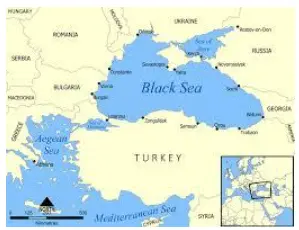
About the Black Sea
- Location and Size
- The Black Sea is a vast inland sea situated at the southeastern edge of Europe, covering an approximate area of 436,000 square kilometers (168,000 square miles).
- Bordering Countries
- It shares its borders with Ukraine to the north, Russia to the northeast, Georgia to the east, Turkey to the south, and Bulgaria and Romania to the west.
- Notably, Russia boasts the longest coastline on the sea, spanning 2,300 kilometers, followed by Turkey with 1,329 kilometers and Ukraine with 1,282 kilometers.
- Geographical Features
- The Crimean Peninsula extends into the Black Sea from the north.
- The sea is connected to the Aegean Sea, an arm of the Mediterranean, through the Bosporus Strait, the Sea of Marmara, and the Dardanelles Strait.
- Additionally, it connects with the Sea of Azov via the Kerch Strait.
- Formation and Salinity
- The Black Sea was formed due to structural upheavals in Asia Minor, which separated the Caspian basin from the Mediterranean.
- Over time, it became isolated, resulting in a salinity level that is less than half that of the world's oceans.
- Hydrology
- The sea receives freshwater inflows from various rivers, including the Danube, Southern Bug, Dnieper, Rioni, and Dniester.
- It is renowned as the largest meromictic basin globally, characterized by rare water movement between its lower and upper layers.
- Ecological Characteristics
- The Black Sea is one of the world's largest anoxic basins, with areas exhibiting very low levels of dissolved oxygen.
- Islands
- Several islands dot the sea, with notable ones including Snake Island (Ukraine), Giresun Island (Turkey), and St. Ivan Island (Bulgaria).
Source: BI
Choline
In News: Recently, researchers made a discovery revealing that a protein known as FLVCR2 facilitates the transportation of the essential nutrient choline into the brain.

About Choline
Choline is an essential nutrient crucial for supporting various bodily functions, including cellular growth and metabolism.
Forms and Absorption
Choline exists in both water-soluble and fat-soluble forms, with the body transporting and absorbing it differently based on its form.
Dietary Sources
- While the body can produce small amounts of choline in the liver, it's insufficient to meet daily requirements, necessitating dietary intake.
- Rich sources include meat, fish, dairy, eggs, as well as fruits, vegetables, and whole grains.
Functions
- Cell Structure: Choline is a key component of phospholipids, such as lecithin, essential for cell membrane integrity across plant and animal cells.
- Methyl Group Source: It provides methyl groups crucial for various metabolic processes.
- Liver Health: Choline aids in clearing cholesterol from the liver, preventing fat and cholesterol buildup associated with nonalcoholic fatty liver disease.
- Nervous System: Choline is essential for acetylcholine synthesis, a neurotransmitter vital for memory, muscle movement, and other nervous system functions.
- Other Roles: It plays roles in gene expression, cell membrane signaling, lipid metabolism, brain development, and acts as a food source for beneficial gut bacteria.
Deficiency Implications:
Choline deficiency can lead to health issues like cardiovascular disease and muscular damage.
Source: MN
Fusobacterium nucleatum
In News: In a recent study, researchers have pinpointed a unique subtype of Fusobacterium nucleatum that is present in significantly higher levels within colorectal cancer (CRC) tumors.
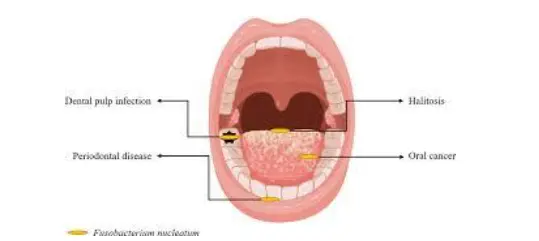
Insights into Fusobacterium nucleatum and Its Role in Colorectal Tumors
- Introduction
- Fusobacterium nucleatum belongs to the class of Gram-negative anaerobic bacilli and is commonly found in various human reservoirs such as the mouth and gastrointestinal tract.
- Opportunistic Pathogen
- Traditionally, F. nucleatum has been viewed as an opportunistic pathogen due to its frequent identification in anaerobic samples from patients with diverse infections.
- Research Highlights
- Genome Analysis: Researchers analyzed the genomes of F. nucleatum strains isolated from human colorectal tumors and compared them with those from individuals without cancer.
- Identification of Subspecies: Among the various subspecies, only one, F. nucleatum animalis (Fna), was consistently present in tumor samples.
- Further Subdivision: Genetic analysis revealed that Fna could be divided into two distinct groups, with only one group, termed Fna C2, being prevalent in colorectal tumor samples.
- Unique Characteristics of Fna C2
- Acid Resistance: Fna C2 demonstrated higher resistance to acid, potentially enabling it to traverse from the mouth to the intestines.
- Intracellular Survival: Fna C2 showed the ability to hide within certain tumor cells, offering protection against the immune system.
- Utilization of Gastrointestinal Nutrients: Fna C2 displayed the capacity to utilize nutrients present in the gastrointestinal tract, distinct from those in the oral cavity.
Source: TH
Venus
In News: A group of US scientists has utilized computer simulations to demonstrate that the lack of water on Venus can be attributed to hydrogen chemistry within the planet's atmosphere, rather than solely its extreme heat.

About Venus
- Position and Characteristics
- Venus holds the distinction of being the second planet from the Sun and the sixth largest planet in our Solar System.
- It stands out as the hottest planet in the Solar System, despite Mercury's proximity to the Sun and greater solar exposure.
- Atmosphere and Temperature
- Venus boasts an atmosphere that effectively traps heat, resulting in scorching temperatures reaching a blistering 880 degrees Fahrenheit (471 degrees Celsius), ample to liquefy lead.
- Its atmosphere's extreme greenhouse effect mirrors Earth's but in an intensified form, contributing to its unparalleled heat.
- Similarity to Earth
- Often dubbed as Earth's twin, Venus shares striking similarities with our planet, including size, mass, density, composition, and gravity.
- Its size is marginally smaller than Earth, comprising approximately 80% of Earth's mass.
- Composition and Atmosphere
- Unlike gas giants, Venus is a rocky planet with a core composed of iron and a rocky mantle, mirroring Earth's internal structure.
- The planet's atmosphere predominantly consists of carbon dioxide (96%) and nitrogen (3.5%), with minor amounts of other gases like carbon monoxide, sulfur dioxide, water vapor, argon, and helium.
- Distinctive Features
- Venus stands out for its unique characteristics, notably its lack of a moon, a rarity shared only with Mercury.
- Additionally, Venus rotates in the opposite direction to most planets, leading to a lengthy rotational period of 243 Earth days.
- It takes Venus 225 Earth days to complete a full orbit around the Sun, making its day longer than its year.
- Visibility and Appearance
- The planet's reflective clouds make it highly visible from Earth, appearing as a radiant white object and ranking among the brightest celestial entities in the night sky.
Source: TT
Orangutans
In News: In a recent observation, scientists witnessed a wild male orangutan in an Indonesian forest reserve engaging in the repetitive action of applying chewed-up leaves from a medicinal plant onto a facial wound.

Orangutans: The Arboreal Giants
- Introduction:
- Orangutans are renowned for their distinctive red fur and are recognized as the largest arboreal mammals, spending over 90 percent of their waking hours in trees.
- Distribution and Habitat:
- Orangutans inhabit the Indonesian island of Sumatra and both the Malaysian and Indonesian regions of Borneo.
- Their habitats range from low-lying peat swamp forests to mountainous forests nearly a mile above sea level.
- Species:
- There are three species of Orangutans: Bornean, Sumatran, and Tapanuli.
- They are closely related to humans, sharing 96.4% of our genetic makeup and displaying high levels of intelligence.
- Physical Features:
- Adult males are approximately twice the size of females, reaching heights of 1.3 meters (4.3 feet) and weights of 130 kg (285 pounds) in the wild.
- They possess long, sparse orange or reddish hair covering their bodies.
- Orangutans have long arms, well-suited for tree life, along with grasping hands and feet equipped with long curved fingers and toes.
- Older males develop wide cheek pads, a unique characteristic among primates.
- Lifespan and Diet:
- Orangutans can live up to 50 years in the wild.
- Their diet primarily consists of fruits and leaves, supplemented by nuts, bark, insects, and occasionally bird eggs.
- Social Structure:
- Orangutans lead semi-solitary lives, although they exhibit social tolerance during periods of abundant fruit, forming gatherings known as parties.
- Conservation Status:
- All three species of Orangutans are categorized as 'Critically Endangered' on the IUCN Red List, highlighting the urgent need for conservation efforts.
Source: TOI
Chloropicrin
In News: The U.S. State Department has accused Russia of utilizing the chemical agent chloropicrin in Ukraine, stating that this action constitutes a breach of the Chemical Weapons Convention.

- About Chloropicrin
- Chemical Compound
- Chloropicrin, also known as nitro chloroform, serves dual roles as a warfare agent and pesticide.
- Physical Appearance
- It manifests as a colorless to yellow oily liquid.
- Usage
- Chloropicrin finds extensive application as a fungicide, herbicide, insecticide, nematicide, and antimicrobial agent.
- Properties
- It possesses irritant properties akin to tear gas, characterized by an intensely irritating odor. Its absorption can occur through inhalation, ingestion, and skin contact.
- Historical Context
- Initially developed as a poison gas during the First World War, both the Allied and Central Powers employed chloropicrin.
- Manufacturing Process
- Chloropicrin is synthesized through a chemical reaction involving sodium hypochlorite (commonly known as bleach) and nitromethane, an industrial solvent.
- Alternatively, it can be produced by combining chloroform with nitric acid, resulting in chloropicrin and water.
- Health Impacts
- Chloropicrin is associated with documented irritative and tear-inducing effects on humans.
- Moreover, it is highly toxic, carcinogenic, and capable of inducing vomiting.
- Chemical Compound
Key Facts about Chemical Weapons Convention
- The Chemical Weapons Convention is a multilateral treaty aimed at banning chemical weapons and mandating their destruction within a specified timeframe.
- It officially entered into force on April 29, 1997.
- Signatory states are required to declare their chemical weapons stockpiles, chemical weapons production facilities (CWPFs), relevant chemical industry facilities, and other weapons-related information to the Organization for the Prohibition of Chemical Weapons (OPCW).
- The convention is open to all nations, with 193 states currently being parties to it.
- India is among the signatories and parties to the Chemical Weapons Convention, having signed the treaty in Paris on January 14, 1993.
- Pursuant to the provisions of the convention, India enacted the Chemical Weapons Convention Act, 2000.
Source: TH
Understanding India's Youth Unemployment: A Critical Perspective
In News: The India Employment Report 2024, co-published by the Institute for Human Development (IHD) and the International Labour Organisation (ILO), has garnered substantial attention. However, specific findings within the report have been prone to misunderstanding or misinterpretation.
Positive Developments in India’s Labour Market Outlined in the India Employment Report
2024
- Improvement in Employment Quality
- The report notes a notable enhancement in employment quality across various states, as indicated by the robust Employment Condition Index, reflecting better wages, benefits, job security, and working conditions.
- Transition from Agriculture to Non-Farm Employment
- A positive trend observed is the transition of workers from agriculture to non-farm sectors, signifying structural economic transformation, productivity increase, and diversification.
- Rise in Regular Employment and Decline in Unorganised Sector Employment
- There's a steady rise in regular employment alongside a decrease in unorganised sector employment, except during the COVID-19 pandemic disruptions, reflecting progress in formalizing the labour market.
- Resilience Amidst COVID-19 Pandemic
- Despite challenges posed by the global economic slowdown due to the pandemic, India's labour market exhibited resilience, with wage increases for casual workers, indicating effective policy responses.
- Increase in Female Workforce Participation
- The report highlights a significant rise in female workforce participation, particularly in agriculture, indicating progress towards gender parity, possibly due to targeted interventions promoting women's economic empowerment.
Persistent Challenges and Emerging Trends
- Dominance of Agriculture in Employment
- Agriculture still predominantly employs nearly half of India's workforce, necessitating structural reforms to facilitate a shift to non-farm sectors.
- Skills Mismatches and Education Disparities
- Mismatches between workforce skills and employer demands, particularly among educated youth, contribute to unemployment despite rising education levels.
- Gender Disparities in Workforce Participation
- Women's participation remains low due to social norms, limited education access, and lack of economic empowerment support.
- Youth Unemployment and NEET Population
- Youth unemployment is a pressing concern, with a significant portion categorized as NEET, highlighting challenges in securing meaningful employment opportunities.
- Informality and Low Productivity in Employment
- The majority of employment remains informal, characterized by low wages and limited access to formal benefits, necessitating policy interventions.
Recommendations by the India Employment Report 2024 to Address Emerging Challenges
The report suggests measures such as enhancing employment intensity in production, improving employment quality, tackling labour market inequalities, boosting women's employment, and bridging skills gaps through effective policies and private sector involvement.
Conclusion
The India Employment Report 2024 offers insights into positive trends and persistent challenges in India's labour market, emphasizing the need for coordinated efforts to achieve inclusive and sustainable growth.
Source: IE
Share the article
Edukemy’s Current Affairs Quiz is published with multiple choice questions for UPSC exams
MCQ
Get Latest Updates on Offers, Event dates, and free Mentorship sessions.

Get in touch with our Expert Academic Counsellors 👋
Frequently Asked Questions
UPSC Daily Current Affairs focuses on learning current events on a daily basis. An aspirant needs to study regular and updated information about current events, news, and relevant topics that are important for UPSC aspirants. It covers national and international affairs, government policies, socio-economic issues, science and technology advancements, and more.
UPSC Daily Current Affairs provides aspirants with a concise and comprehensive overview of the latest happenings and developments across various fields. It helps aspirants stay updated with current affairs and provides them with valuable insights and analysis, which are essential for answering questions in the UPSC examinations. It enhances their knowledge, analytical skills, and ability to connect current affairs with the UPSC syllabus.
UPSC Daily Current Affairs covers a wide range of topics, including politics, economics, science and technology, environment, social issues, governance, international relations, and more. It offers news summaries, in-depth analyses, editorials, opinion pieces, and relevant study materials. It also provides practice questions and quizzes to help aspirants test their understanding of current affairs.
Edukemy's UPSC Daily Current Affairs can be accessed through:
- UPSC Daily Current Affairs can be accessed through Current Affairs tab at the top of the Main Page of Edukemy.
- Edukemy Mobile app: The Daily Current Affairs can also be access through Edukemy Mobile App.
- Social media: Follow Edukemy’s official social media accounts or pages that provide UPSC Daily Current Affairs updates, including Facebook, Twitter, or Telegram channels.


